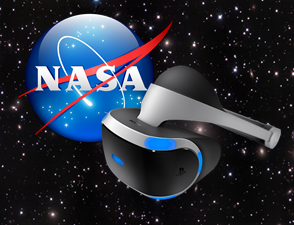NASA Robots Trained with Playstation VR
 Project Morpheus – as is the codename of Playstation VR is currently aiding NASA to train space robots for tasks that would otherwise have to be completed by humans. Describing this as a step in the right direction would be an understatement as you can imagine how dangerous their missions are and how many people have lost their lives. Being able to prevent that has an unmeasurable value, no doubt.
Project Morpheus – as is the codename of Playstation VR is currently aiding NASA to train space robots for tasks that would otherwise have to be completed by humans. Describing this as a step in the right direction would be an understatement as you can imagine how dangerous their missions are and how many people have lost their lives. Being able to prevent that has an unmeasurable value, no doubt.
The Playstation VP is a head-mounted virtual reality display developed by Sony, designed to work with the video game system of Playstation 4. The OLED 1920×1080 px display (providing 960×1080 px resolution/eye) promises to take you to a whole new dimension, as is expected from virtual reality gadgets. Part of the ‘Mighty Morphenaut’ project, this system allows the user to control the robot in the environment that it is in and make decisions which will choose its next move.
Nevertheless, given the long distance between the robot and the user, the developers expect to use what they call “ghost hands”, which will immediately respond to the operator while the robot’s movement will follow later on. This will enable humanoids to assist and even take on dangerous tasks on the International Space Station (ISS). While NASA has been experimenting before with drones and probes, they proved to be to specialized, lacking the dexterity and flexibility of humans. NASA has already developed a humanoid robot called Robonaut 2, designed to be as human-like as possible, with arms, fingers and hands; however, this is only half of the task, as the most important thing is making these robots as effective and ready to improvise as human hands.
“The hope is that by putting people in an environment where they can look around and move in ways that are much more intuitive than with a mouse and keyboard, it would require less training to understand how to operate the robot and enable quicker, more direct control of the motion,” Garrett Johnson, Software Engineer at NASA told Ben Lang for roadtovr.com.
Virtual Reality has been tested and implemented in many departments, such as education and healthcare and it has already started to do its magic. Ultimately, the implementation of virtual reality has the achieved the greatest performance in healthcare, being used for surgery simulation and training, as well as for experimenting in a risk-free environment.
